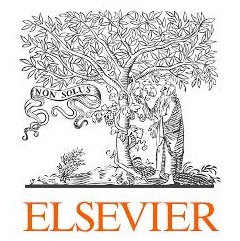Brain activation provides individual-level prediction of bipolar disorder risk
Activation patterns predicting mania symptom severity offer a potential neural biomarker to identify young people at risk for bipolar spectrum disorders
Patterns of brain activation during reward anticipation may help identify people most at risk for developing bipolar spectrum disorders (BPSD), according to a study in Biological Psychiatry: Cognitive Neuroscience and Neuroimaging, published by Elsevier. Mania in people with BPSD is often accompanied by impulsivity, including impulsive responses to potential rewards. In the study, patterns of neural activation during a reward task predicted the severity of the mania symptom in young adults who have not yet developed the disorder.
“Given that emerging manic symptoms predispose to bipolar disorders, these findings can provide neural biomarkers to aid early identification of bipolar disorder risk in young adults,” said first author Leticia de Oliveira, PhD, Federal Fluminense University, Brazil.
Having a family member with BPSD puts a person at risk for the disorder, but the relationship doesn’t provide enough information to make decisions about potential interventions to help delay or prevent the disorder. The new study shows for the first time that brain activation patterns could be used to predict BPSD risk on an individual level. “These findings could be potentially used to guide the development and choice of early therapeutic interventions, reducing the significant social costs and deleterious outcomes associated with the disorder in these vulnerable individuals,” said Dr. Oliveira.
To be sure that the approach would apply to anyone at risk, Dr. Oliveira and colleagues performed the brain imaging in a transdiagnostic group of young adults—the participants had a variety of psychiatric complications, but none had yet developed BPSD.
Of the whole brain, activation in a brain region used during decision making in reward contexts, called the ventrolateral prefrontal cortex (vlPFC), contributed the most to the prediction of symptom severity. This suggests that vlPFC activity in particular may be useful to predict severity of mania symptoms associated with BPSD risk in young adults.
“This study shows how the powerful combination of computational image analysis tools and functionally targeted task fMRI (in this case reward processing) can provide insights into the neural systems underlying symptoms that may indicate liability to mania, in a young, non-bipolar transdiagnostic group of psychiatric patients,” said Cameron Carter, MD, Editor of Biological Psychiatry: Cognitive Neuroscience and Neuroimaging.
The researchers replicated the results and the role of the vlPFC in a second independent sample of young adults in the same study, further confirming the potential utility of neural activation in this brain region as a biomarker for BPSD risk.
------
The article is “Predicting bipolar disorder risk factors in distressed young adults from patterns of brain activation to reward: a machine learning approach,” by Leticia Oliveira, Liana C. L. Portugal, Mirtes Pereira, Henry W. Chase, Michele Bertocci, Richelle Stiffler, Tsafrir Greenberg, Genna Bebko, Jeanette Lockovich, Haris Aslam, Janaina Mourao-Miranda, and Mary L. Phillips (https://doi.org/10.1016/j.bpsc.2019.04.005). It appears in Biological Psychiatry: Cognitive Neuroscience and Neuroimaging, published by Elsevier.
Copies of this paper are available to credentialed journalists upon request; please contact Rhiannon Bugno at BPCNNI@sobp.org or +1 214 648 0880. Journalists wishing to interview the authors may contact Mary Phillips, MD, University of Pittsburgh, at phillipsml@upmc.edu or Janaina Mourao-Miranda, PhD, University College London, at j.mourao-miranda@ucl.ac.uk or Leticia de Oliveira, PhD, at oliveira_leticia@id.uff.br.
The authors’ affiliations and disclosures of financial and conflicts of interests are available in the article.
Cameron S. Carter, MD, is Professor of Psychiatry and Psychology and Director of the Center for Neuroscience at the University of California, Davis. His disclosures of financial and conflicts of interests are available here.
About Biological Psychiatry: Cognitive Neuroscience and Neuroimaging
Biological Psychiatry: Cognitive Neuroscience and Neuroimaging is an official journal of the Society of Biological Psychiatry, whose purpose is to promote excellence in scientific research and education in fields that investigate the nature, causes, mechanisms and treatments of disorders of thought, emotion, or behavior. In accord with this mission, this peer-reviewed, rapid-publication, international journal focuses on studies using the tools and constructs of cognitive neuroscience, including the full range of non-invasive neuroimaging and human extra- and intracranial physiological recording methodologies. It publishes both basic and clinical studies, including those that incorporate genetic data, pharmacological challenges, and computational modeling approaches. www.sobp.org/bpcnni
About Elsevier
Elsevier is a global information analytics business that helps scientists and clinicians to find new answers, reshape human knowledge, and tackle the most urgent human crises. For 140 years, we have partnered with the research world to curate and verify scientific knowledge. Today, we’re committed to bringing that rigor to a new generation of platforms. Elsevier provides digital solutions and tools in the areas of strategic research management, R&D performance, clinical decision support, and professional education; including ScienceDirect, Scopus, SciVal, ClinicalKeyand Sherpath. Elsevier publishes over 2,500 digitized journals, including The Lancet and Cell, 39,000 e-book titles and many iconic reference works, including Gray’s Anatomy. Elsevier is part of RELX Group, a global provider of information and analytics for professionals and business customers across industries. www.elsevier.com
( Press Release Image: https://photos.webwire.com/prmedia/6/242114/242114-1.jpg )
WebWireID242114
This news content was configured by WebWire editorial staff. Linking is permitted.
News Release Distribution and Press Release Distribution Services Provided by WebWire.
